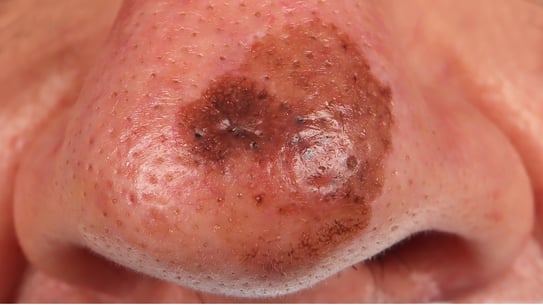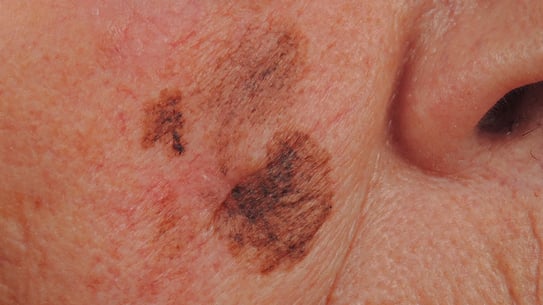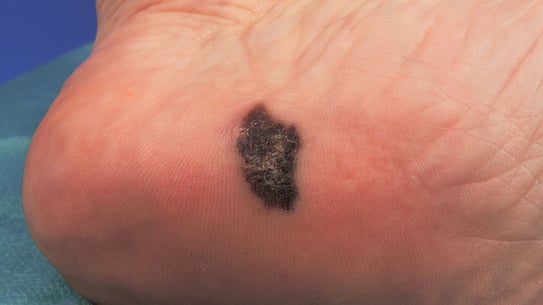1 professionals
Melanoma: Clinic, diagnosis and treatment
Melanoma: Clinic, diagnosis and treatment
URL copied
Medical editor: Dr. Pierre Schneider, Dermatologist, Saint-Louis Hospital, France.
Related topics
Without excision at this horizontal stage, the growth of the cancer cells becomes vertical:
Fig 1,2: Dubreuilh's melanoma


Fig: Acral Lentiginous melanoma

Poor prognosis
Although very rare, it poses the problem of early removal of extensive congenital pigmentary nevi.
In these cases, the initial melanoma was either removed without histological examination (which is inadmissible) or regressed spontaneously in its entirety.
Clinically, the classic signs that should raise the suspicion of melanoma can be observed using the ABCDE method:
In the case of a patient with one or more risk factors and no suspicious lesions, the GP should encourage the patient to self-examine regularly (every 3 months) using the ABCDE method. It is important to clearly inform the patient about what should alert them:
The treatment consists of several stages2:
The entire lesion is removed, without margin. This excision allows:
Different situations may arise, depending on the Breslow index:
Strictly epidermal cancer cells: a surgical revision with a margin of 0.5 cm is done secondarily.
Surgical revision with a margin of 1 cm is necessary.
Surgically resected according to their thickness, i.e:
Patients are also subjected to a disease staging assessment with:
The recommended therapeutic approach depends on:
Advanced stages (III and IV) will systematically require immunotherapy as a first line of treatment. The choice of antibody will be determined by the BRAF status of the primary tumor. Adjuvant treatment or adjuvant surgery may also be given depending on the level of brain metastases, very common in metastatic melanoma (up to 75% of brain metastases) 4.

* SPF ≥ 50 with the highest UVA protection guaranteeing a balanced UVB/UVA ratio (we now know the major role of UVA in the genesis of skin cancers, alongside UVB).
Create easily your professional account
I create my accountAccess exclusive business services unlimited
Access valuable features : audio listening & tools sharing with your patients
Access more than 150 product sheets, dedicated to professionals
